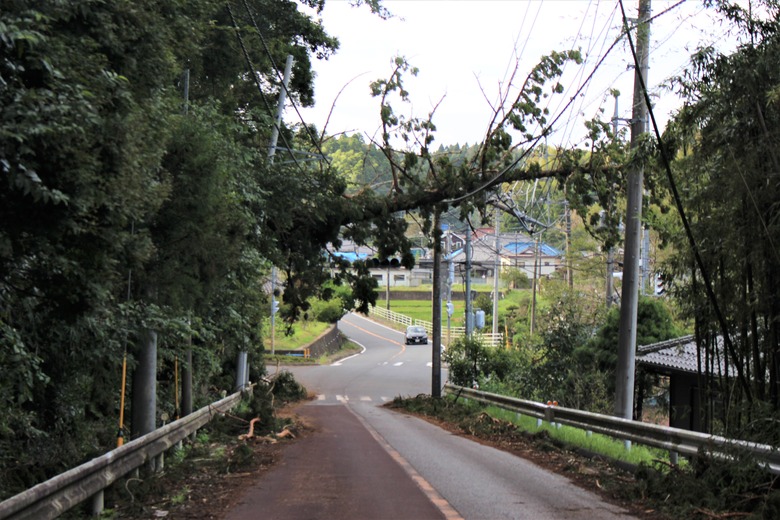What Are The Stages Of Development Of A Hurricane?
While the wind speeds of tornadoes can be greater, no storms on Earth wield such violence over such a broad area as tropical cyclones, which are called hurricanes in the North Atlantic and the Eastern Pacific and typhoons in the Northwest Pacific. These huge storms brew up over warm ocean waters and sputter out when they pass over cooler seas or onto land, but before doing so, they can wreak incredible havoc on human life and property.
Read more about the characteristics of hurricanes.
Hurricane development begins with subtle atmospheric disturbances that, given the proper continuing conditions, can morph into monstrous spinning maelstroms in short order.
The 4 Stages of a Hurricane
The
4 Stages of a Hurricane
The hurricane life cycle can broadly be divided into four stages. The first is the tropical disturbance, a cluster of thunderstorms formed over tropical (or sometimes subtropical) waters.
Most tropical disturbances peter out without intensifying, but some strengthen into organized low-pressure systems into which winds start swirling: counter-clockwise in the Northern Hemisphere, clockwise in the Southern. These low-pressure centers are called tropical depressions.
If a tropical depression's pressure drops enough and its winds strengthen to 39 miles per hour (34 knots), it officially graduates into tropical storm status. Tropical storms have intense stormy cores flanked by early-forming outer rainbands, hallmarks of a full-grown tropical cyclone.
About half of tropical storms intensify into hurricanes, declared when their winds hit 74 miles per hour (64 knots) or more. The strongest hurricanes and typhoons rage with wind speeds beyond 150 miles per hour.
Read more about how a hurricane forms.
Hurricane Breeding Grounds
Hurricane
Breeding Grounds
The fuel for hurricanes is warm ocean water. Strong solar energy powers the evaporation of this balmy brine in relatively dry air; when the air rises and its water vapor condenses, this energy is released as latent heat. If a low-pressure center develops, it attracts wind, which evaporates more water and thus provides more fuel to the developing storm.
Ocean temperatures of about 80 degrees Fahrenheit or more are required to birth a hurricane by providing high-enough evaporation rates. That's why hurricane breeding grounds are tropical: typically 10 to 30 degrees of latitude.
Waters around the equator are certainly warm enough to spark a hurricane, but tropical cyclones don't typically form in the immediate equatorial belt. That's because air close to the equator flows directly from high to low pressure. As you move away from the equator, the influence of the Earth's rotation deflects winds, creating the spiraling airflow that allows a low to strengthen.
Easterly Waves
Easterly
Waves
The initial seed for many hurricanes in the North Atlantic, and definitely most of the so-called Cape Verde hurricanes that normally rank as the strongest in that ocean basin, are disturbances known as easterly waves (or tropical waves). These are ripples in a wind channel known as the African easterly jet created by temperature differences between the Sahara Desert and the Gulf of Guinea.
The easterly waves track westward over the North Atlantic and form the foundation for tropical disturbances that can blossom into hurricanes, which then have a long track of warm waters to feed off of as they approach the Caribbean and North America. Interestingly, recent research suggests the origin of easterly waves – and thus many North Atlantic hurricanes – to be thunderstorms over equatorial Africa.
Death (and Rebirth) of Hurricanes
Death
(and Rebirth) of Hurricanes
When they're robbed of the warm ocean waters that power them, hurricanes weaken and eventually dissipate, though the longest-lasting of them may endure for weeks. Post-hurricane rainstorms can travel long distances inland, prompting flooding and other impacts. The weakening can come when prevailing winds steer tropical cyclones poleward over colder waters – a recurving hurricane – or when the storms make landfall.
Sometimes, dying hurricanes shunted toward the poles actually transform into entirely different storms known as extratropical cyclones. These are large midlatitude lows fed not by warm waters but by strong temperature differences between air masses, and if an ebbing hurricane gets drawn up in this frontal clash and becomes an extratropical cyclone, the evolution is called extratropical transition. Extratropical cyclones can also morph into hurricanes if their journey brings them into contact with warm seawater.
Among the most infamous weather events in U.S. history, the "Perfect Storm" of 1991, was a case in point: A strong regional variety of extratropical cyclone, a nor'easter, ended up incorporating a northbound tropical cyclone, Hurricane Grace, and then itself turned into a new hurricane when it moved over the Gulf Stream.
References
- NOAA Hurricane Research Division: What Is a Hurricane, Typhoon, or Tropical Cyclone?
- NOAA Hurricane Research Division: What Is a Tropical Disturbance, a Tropical Depression, or a Tropical Storm?
- NOAA Hurricane Research Division: What Is an Easterly Wave?
- Meteorology: Understanding the Atmosphere; Steven A. Ackerman, John A. Knox
Cite This Article
MLA
Shaw, Ethan. "What Are The Stages Of Development Of A Hurricane?" sciencing.com, https://www.sciencing.com/stages-development-hurricane-8516910/. 22 November 2019.
APA
Shaw, Ethan. (2019, November 22). What Are The Stages Of Development Of A Hurricane?. sciencing.com. Retrieved from https://www.sciencing.com/stages-development-hurricane-8516910/
Chicago
Shaw, Ethan. What Are The Stages Of Development Of A Hurricane? last modified March 24, 2022. https://www.sciencing.com/stages-development-hurricane-8516910/
